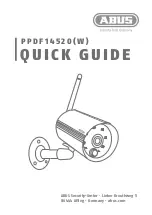
CHEETAH Hardware User’s Manual
Imperx, Inc.
Rev. 6.2
6421 Congress Ave.
7/7/2015
Boca Raton, FL 33487
+1 (561) 989-0006
43 of 152
2.7 EXPOSURE CONTROL
2.7.1 Internal Exposure Control - Electronic Shutter
In rolling shutter mode, each row is reset (cleared of signal) sequentially (one after
another). There is a delay between the time that a row is reset and the time when this
row is readout equaling the exposure time. While rolling shutter mode offers
superior noise performance (and thus better sensitivity) as compared to global
shutter mode, in rolling shutter mode each row of the image is captured at a slightly
different time and this can introduce image artifacts when there is motion in the
image. In global shutter mode, all pixels in the array are reset at the same time,
allowed to collect signal during the exposure time and then the image is transferred
to a non-photosensitive region within each pixel. Once the image is transferred to the
non-photosensitive region, then the readout of the array begins. In this way, all
pixels capture the image during the same time period reducing any image artifacts
due to motion within the scene. The maximum exposure is frame time dependent and
the minimum exposure is ~ 5 microseconds in global shutter mode and 1
microseconds in rolling shutter mode.
The camera normally overlaps the exposure and readout times for both global and
rolling shutter modes as shown in Figure 2.5a and Figure 2.5b. Both figures show an
8.33mS exposure time overlapping with the 13.8 ms readout time. Figure 2.5c shows
non-overlap exposure and readout in Dual Video Trigger mode.
Rolling Shutter
















































